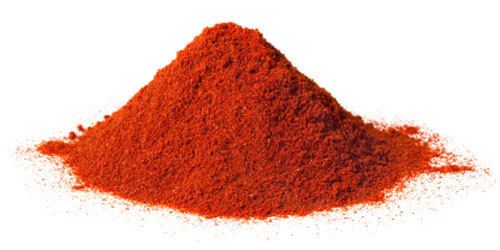 | ||
Similar Black pepper, Spice, Cumin, Onion, Chili pepper | ||
Paprika (US English more commonly /pəˈpriːkə/, British English more commonly /ˈpæprɪkə/) is a ground spice made from red air-dried fruits of the larger and sweeter varieties of the plant Capsicum annuum, called bell pepper or sweet pepper, sometimes with the addition of more pungent varieties, called chili peppers, and cayenne pepper. In many languages, but not English, the word paprika also refers to the plant and the fruit from which the spice is made.
Contents
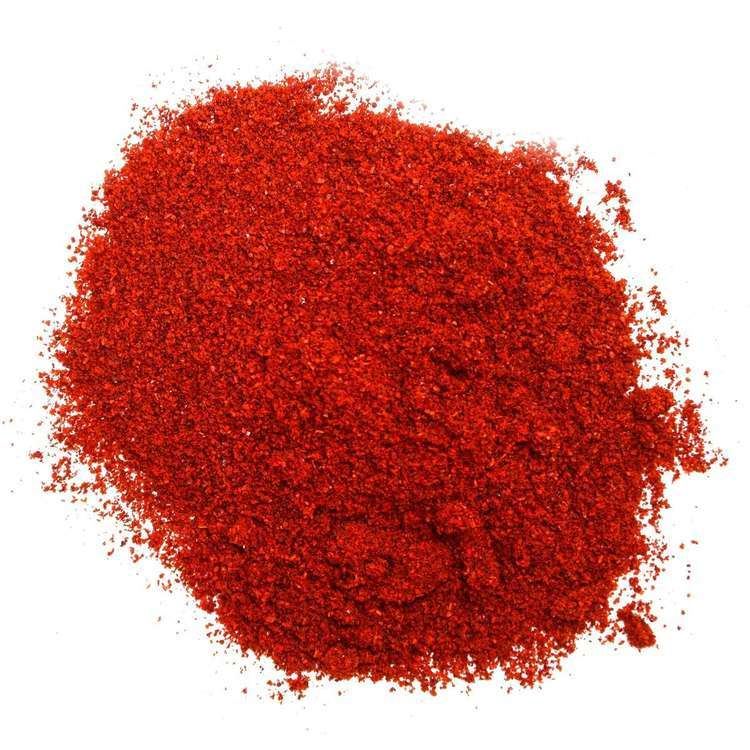
Although paprika is often associated with Hungarian cuisine, the peppers from which it is made are native to the New World and were later introduced to the Old World. Originating in central Mexico, paprika was brought to Spain in the 16th century. The seasoning is also used to add color to many types of dishes.

The trade in paprika expanded from the Iberian Peninsula to Africa and Asia, and ultimately reached Central Europe through the Balkans, then under Ottoman rule, which explains the Hungarian origin of the English term. In Spanish, paprika has been known as pimentón since the 16th century, when it became a typical ingredient of western Extremadura. Despite its presence in Central Europe since the beginning of Ottoman conquests, it did not become popular in Hungary until the late 19th century.
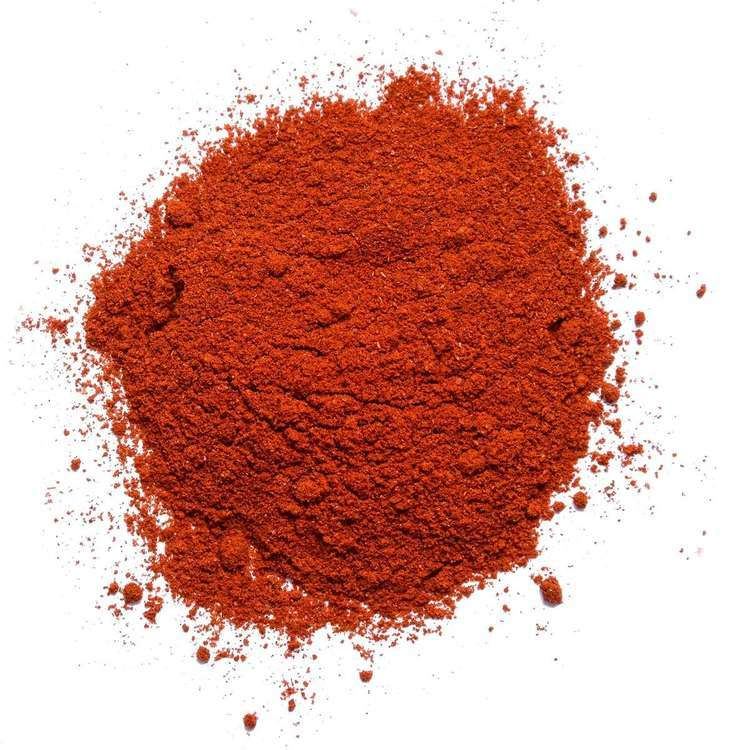
Paprika can range from mild to hot – the flavor also varies from country to country – but almost all plants grown produce the sweet variety. Sweet paprika is mostly composed of the pericarp, with more than half of the seeds removed, whereas hot paprika contains some seeds, stalks, placentas, and calyces. The red, orange or yellow color of paprika is due to its content of carotenoids.
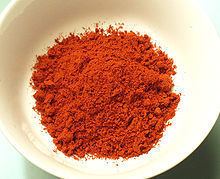
History and etymology

The plant used to make the Hungarian version of the spice was grown in 1529 by the Turks at Buda (now part of Budapest, the capital of Hungary). Central European paprika was hot until the 1920s, when a Szeged breeder found a plant that produced sweet fruit, which he grafted onto other plants.
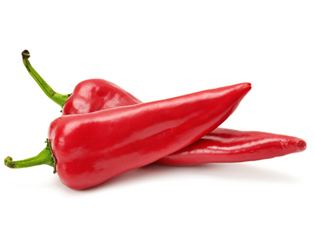
The first recorded use of the word paprika in English is from 1896, although an earlier reference to Turkish paprika was published in 1831. The word derives from the Hungarian word paprika, a diminutive of the Serbo-Croatian word papar meaning "pepper", which in turn came from the Latin piper or modern Greek piperi. Paprika and similar words, peperke, piperke, and paparka, are used in various Slavic languages in the Balkans for bell peppers. The exact word "paprika" entered a large number of languages, probably via German. European languages use a similar if not identical word: Slovak, Italian, Polish, Swedish, Bulgarian, Hebrew, and Japanese all use a variant of paprika.
Production and varieties
Paprika is produced in various places including Hungary, Serbia, Spain, the Netherlands, China, and some regions of the United States.
Hungary is a major source of commonly-used paprika. It is available in different grades:
Spanish paprika (pimentón) is available in three versions — mild (pimentón dulce), moderately spicy (pimentón agridulce), and very spicy (pimentón picante). Some Spanish paprika, like pimentón de la Vera, has a distinct smoky flavor and aroma as it is dried by smoking, typically using oak wood.
The Netherlands is a major production and distribution source of paprika as well, especially grown in greenhouses, while China is the world's biggest exporter of sweet paprika for use as a coloring agent as of 2016.
As of September 15, 2016, McCormick's paprika used peppers grown in the United States, while its "smoked paprika" was imported from Spain.
Culinary
Paprika is used as an ingredient in numerous dishes throughout the world. It is principally used to season and color rices, stews, and soups, such as goulash, and in the preparation of sausages, mixed with meats and other spices. In the United States, paprika is frequently sprinkled raw on foods as a garnish, but the flavor is more effectively pronounced by heating it in oil.
Hungarian paprika is often specified in recipes because it is unique. It is bright red and said to be sweeter than the same paprika grown in other soils and climates. In paprikash (paprika gravy: a combination of broth, paprika, and sour cream), Hungarian paprika is commonly used. In Moroccan cuisine, paprika (tahmira) is usually augmented by the addition of a small amount of olive oil blended into it.
Carotenoids
The red, orange or yellow color of paprika powder derives from its mix of carotenoids. Yellow-orange paprika colors derive primarily from α-carotene and β-carotene (provitamin A compounds), zeaxanthin, lutein and β-cryptoxanthin, whereas red colors derive from capsanthin and capsorubin.
Nutrition
In a typical serving size of one teaspoon (2 grams), paprika supplies 6 calories and is rich in vitamin A (21% of the Daily Value), but provides no other nutrients in significant content.
